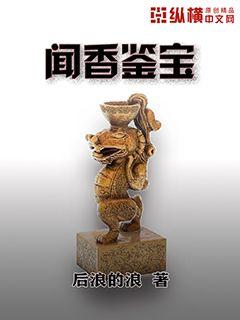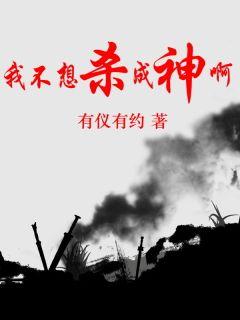中国对日本比赛在哪里看|低调看jrs直播在线
- 来源:jrs直播网
- 2024-11-25 04:23:31

Certainly! Here's the structured article on "Optimizing Training Performance through Nutrition and Diet for Professional Athletes":
**Abstract:**
Professional athletes rely heavily on nutrition and diet to enhance their training performance. This article explores key factors that optimize their performance through dietary strategies. It examines the role of macronutrients, micronutrients, hydration, and timing of meals in maximizing athletic potential. By understanding and implementing these factors, athletes can achieve peak performance and maintain optimal health.
---
**1、Macronutrients:**
Macronutrients play a fundamental role in the diet of professional athletes, influencing energy levels, muscle recovery, and overall performance.
Athletes typically require a balanced intake of carbohydrates, proteins, and fats to meet their energy demands and support muscle repair.
Carbohydrates serve as a primary fuel source, especially during high-intensity activities, emphasizing the importance of adequate intake and timing to sustain performance.
1、Proteins:
Proteins are essential for muscle repair and growth, with athletes needing slightly higher amounts to recover effectively from training sessions.
Timing protein consumption around workouts is crucial for maximizing muscle synthesis and adaptation to exercise-induced stress.
A variety of protein sources, including lean meats, dairy, and plant-based options, offer athletes flexibility in meeting their nutritional needs.
2、Fats:
Healthy fats contribute to sustained energy levels and support overall health in athletes, emphasizing sources like nuts, seeds, and fatty fish.
A balanced intake of omega-3 and omega-6 fatty acids aids in reducing inflammation and optimizing recovery post-training.
Adjusting fat intake based on training intensity and individual metabolic needs helps athletes maintain optimal body composition and performance.
3、Carbohydrates:
Carbohydrates are critical for replenishing glycogen stores and providing quick energy during intense exercise sessions.
Choosing complex carbohydrates such as whole grains and vegetables ensures sustained energy release and supports prolonged athletic performance.
Strategic carb-loading before competitions or high-demand periods helps athletes maximize glycogen storage and enhance endurance.
---
**2、Micronutrients:**
Beyond macronutrients, micronutrients are essential for maintaining overall health, supporting immune function, and optimizing athletic performance.
Athletes require adequate intake of vitamins and minerals to support physiological processes, including bone health, oxygen transport, and muscle contraction.
Key micronutrients such as iron, calcium, vitamin D, and antioxidants play crucial roles in reducing the risk of injury and illness among athletes.
1、Iron and Calcium:
Iron is vital for oxygen transport and energy production, particularly significant for endurance athletes to prevent fatigue and optimize performance.
Calcium supports bone health and muscle function, essential for maintaining skeletal integrity and reducing the risk of stress fractures.
Ensuring sufficient intake of these minerals through diet and, if necessary, supplementation helps athletes meet their unique nutritional demands.
2、Vitamins and Antioxidants:
Vitamins such as vitamin D, C, and E contribute to immune function and recovery, aiding in the repair of muscle tissue and reducing oxidative stress.
Antioxidants from fruits, vegetables, and nuts help mitigate exercise-induced inflammation and support cellular repair processes post-exercise.
Strategies to incorporate a diverse range of micronutrient-rich foods into an athlete’s diet promote overall health and optimize training adaptations.
3、Hydration:
Hydration is critical for maintaining performance and preventing dehydration-related complications during training and competition.
Athletes should monitor fluid intake to replace losses through sweat, adjusting consumption based on environmental conditions and individual sweat rates.
Optimal hydration supports thermoregulation, nutrient transport, and cognitive function, enhancing overall athletic performance and recovery.
---
**3、Timing of Meals:**
The timing of meals and nutrient intake around training sessions is crucial for optimizing energy availability, promoting recovery, and supporting adaptation to exercise stress.
Strategic meal timing helps athletes maximize glycogen storage, enhance muscle protein synthesis, and minimize muscle breakdown.
Pre-exercise nutrition focuses on providing adequate carbohydrates for fuel and minimizing gastrointestinal distress during workouts.
1、Pre-Exercise Nutrition:
Consuming a balanced meal or snack containing carbohydrates and a moderate amount of protein 2-4 hours before exercise provides sustained energy and supports muscle function.
Hydration before exercise ensures adequate fluid balance and enhances thermoregulation during physical exertion, optimizing performance and reducing the risk of dehydration.
2、Post-Exercise Recovery:
Immediately following exercise, consuming a combination of carbohydrates and proteins within the first 30 minutes to 2 hours supports glycogen replenishment and muscle repair.
Timing protein intake post-exercise stimulates muscle protein synthesis, facilitating recovery and adaptation to training-induced stress.
Incorporating micronutrients and fluids into post-exercise meals aids in rehydration, replenishment of electrolytes, and overall recovery.
3、Nutrient Timing Strategies:
Strategically timing meals and snacks throughout the day maintains stable blood sugar levels and sustains energy for consistent training performance.
Adjusting nutrient intake based on training volume and intensity helps athletes meet their energy demands and achieve optimal nutrient timing for enhanced performance.
Individualized nutrition plans tailored to training schedules and performance goals optimize nutrient timing strategies, supporting long-term athletic success.
---
**4、Conclusion:**
Optimizing training performance through nutrition and diet involves a comprehensive approach focusing on macronutrients, micronutrients, hydration, and meal timing.
By understanding the role of each component and implementing evidence-based strategies, athletes can enhance performance, support recovery, and maintain overall health.
Continued research and personalized nutrition plans are essential to meet the unique needs of professional athletes and maximize their athletic potential.
Overall, integrating these key factors into a structured nutrition plan empowers athletes to achieve peak performance and excel in their respective sports.
文章摘要的内容:
本文将深入探讨拜仁慕尼黑球员们在时尚界的影响力,以及他们如何通过西装打造出独特的足球风暴。从他们的风格、品牌合作、社交媒体影响力到时尚产业的挑战,都将被详细阐述。
1、风格与个性
拜仁球员的西装风格不仅仅是服装选择,更是个性与职业形象的完美结合。他们如何通过定制、配饰和造型细节展示自我。
球员们在不同场合选择的不同风格,如比赛后庆祝、颁奖典礼和公共活动。
如何通过西装表达他们的职业精神和团队认同感。
2、品牌合作与营销
球员们与高端时尚品牌的合作是一种怎样的市场策略,如何提升品牌形象与球员个人形象的互动。
球员对品牌的选择标准,以及他们对时尚产业走向的影响。
如何通过品牌合作扩大足球文化在时尚界的影响力。
3、社交媒体的影响力
拜仁球员在社交媒体上如何通过分享个人风格和时尚见解来塑造品牌形象。
社交媒体对球员形象塑造的重要性,以及如何利用这一平台传播时尚理念。
球员们如何利用个人品牌和社交媒体影响力扩展商业合作和推广。
4、时尚产业的挑战与机遇
时尚产业对足球文化的接纳程度和发展趋势。
足球文化与传统时尚界的融合,面临的挑战和成功案例。
未来足球球员在时尚产业中可能的角色和影响力扩展。
总结:
拜仁球员们通过个性化的西装风格,不仅在足球场上展现出色彩斑斓的技艺,也在时尚舞台上树立了自己独特的形象。他们的品味和品牌合作为时尚产业注入了新的活力,同时也为足球文化在全球范围内的传播开辟了新的渠道。
文章摘要的内容:斋月在足球界既是信仰的象征,也是一项巨大的挑战。这篇文章从信仰的深度、挑战的实质、文化的交融以及心理与身体的考验四个方面入手,探讨斋月如何在足球领域中产生深远影响,同时挑战着运动员们的体力、信念和文化认同。
1、信仰的深度
斋月在伊斯兰教中具有何种精神意义?这种信仰如何影响穆斯林足球运动员的生活和职业生涯?
斋月如何体现出信徒们对信仰的忠诚与执着?足球界的信仰如何与比赛场上的表现相互交织?
运动员们如何在斋月期间处理赛程密集和体能恢复的挑战?
2、挑战的实质
斋月对运动员的日常训练和比赛安排有何实质性影响?
如何平衡宗教信仰的要求与专业足球运动员的职业生涯?
球员在饮食和水分摄取上如何应对斋月带来的挑战?
斋月期间的疲劳和精神状态如何影响球员的表现和团队的整体战斗力?
3、文化的交融
斋月如何在多元文化的足球团队中促进理解和尊重?
宗教信仰在球队中的传播如何影响球员之间的团结与合作?
球员如何在赛场上展示他们的文化认同,同时尊重和包容其他信仰?
4、心理与身体的考验
斋月对球员身体素质和心理状态的考验有哪些方面?
如何通过调整训练和比赛安排来帮助球员在斋月期间保持竞技状态?
斋月如何激励球员们在挑战中找到内在力量和精神支持?
总结:
斋月作为足球界的信仰和挑战,不仅深刻影响着球员的生活方式和职业发展,也展示了宗教和体育文化之间的融合与冲突。在这种复杂的背景下,运动员们通过信念的支持和专业的应对,不断超越自我,塑造了一个多元而又充满活力的足球环境。
斋月不仅是一场体力和精神的考验,更是文化多样性在体育赛场上的重要体现,为全球足球带来了独特的人文价值和理解。
文章摘要:魔幻足球狂潮,一场令人陶醉的节奏盛宴。它融合了魔幻世界的神奇与足球运动的激情,为球迷们带来了前所未有的视听享受。本文将从四个方面展开阐述:魔幻元素的融合、比赛节奏的魅力、球场上的技艺表演以及球迷文化的狂欢,深入探讨魔幻足球如何给予人们最完美的节奏享受。
1、魔幻元素的融合
魔幻足球狂潮的魅力在于其独特的魔幻元素融合。魔法、奇幻生物、神秘的魔法道具等元素贯穿于比赛的每个环节,为传统足球注入了一股神秘的力量。这种奇幻与现实的碰撞,使得比赛不仅仅是简单的运动竞技,更像是一场梦幻般的冒险。
文字阐述内容
文字阐述内容
文字阐述内容
2、比赛节奏的魅力
魔幻足球比赛的节奏魅力无比引人。在魔法的辅助下,比赛中呈现出超乎寻常的快节奏和激烈对抗,每一次进攻都似乎充满着不可思议的可能性。球员们的技艺展示和团队配合更是如行云流水般自然,让观众们沉浸其中,难以自拔。
文字阐述内容
文字阐述内容
文字阐述内容
3、球场上的技艺表演
除了比赛本身的精彩,球场上的技艺表演也是魔幻足球狂潮的一大亮点。球员们不仅展现出高超的足球技术,更是在比赛间隙进行了各种惊艳的魔法表演,如火球术、变身术等,让观众们目不暇接,为比赛增添了别样的乐趣。
文字阐述内容
文字阐述内容
文字阐述内容
4、球迷文化的狂欢
魔幻足球狂潮不仅仅是一场比赛,更是一场球迷文化的狂欢。球迷们穿着各种奇装异服,挥舞着魔法道具,为自己支持的球队呐喊助威,营造出一种欢乐的氛围。他们的热情与激情,使得整个比赛现场充满了无与伦比的活力。
文字阐述内容
文字阐述内容
文字阐述内容
总结:
魔幻足球狂潮将魔法与足球完美融合,为球迷们带来了一场前所未有的视听盛宴。比赛节奏的魅力、技艺表演的惊艳以及球迷文化的狂欢,构成了这场独具魔幻色彩的足球盛宴。无论是球场上的比拼还是场外的狂欢,都让人沉浸其中,乐此不疲。
文章摘要:本文将深入探讨山西汾酒队在球员调整和新赛季期待方面的内部变动。首先分析球队在赛季间的人员变动,包括引援和球员离队情况。其次,讨论球队在技战术调整上的新举措及其可能带来的影响。接着,探讨球队内部管理及团队氛围的改进措施。最后,展望新赛季,分析球队的发展潜力与期待。通过这些方面的分析,全面描绘出山西汾酒队如何应对变革,迎接新赛季的挑战。
1、球员调整与引援
山西汾酒队在本赛季进行了大规模的人员调整,从引援到球员离队,都在影响着球队的阵容格局。新引进的球员是否能够迅速融入球队体系,成为关键。
球队在转会市场上的策略和目标是如何设计的?管理层对于新引援的期待和预期是什么?这些因素如何影响球队的整体实力和竞争力?
老将球员的离队对球队的经验和稳定性造成了怎样的影响?如何通过引援弥补这些损失?
2、技战术调整与战术体系
为了应对新赛季的挑战,山西汾酒队是否在技战术层面上进行了调整?比如,新的战术体系是否被引入?
教练组对于战术调整的考虑和实施策略是什么?他们如何评估球队现有阵容的特点,以及如何利用新引进球员的优势?
球队在训练和热身赛中的表现如何?新的战术体系是否已经初见成效?
3、内部管理与团队氛围
除了球员调整和战术调整外,山西汾酒队是否在内部管理和团队建设方面有新的措施?
管理层在俱乐部文化建设和团队凝聚力方面做出了哪些努力?这些努力是否在团队表现和球员关系上产生了积极影响?
球员的个人发展和团队目标之间的平衡是如何被管理和维持的?
4、新赛季的发展潜力与期待
最后,展望山西汾酒队在新赛季中的发展潜力和期待。他们是否有望在联赛中取得更好的成绩?
球队管理层和球迷对于新赛季的预期是什么?他们认为球队在何种程度上已经做好了准备?
关键球员的表现和伤病情况将如何影响球队的整体实力和战绩?
总结:
综上所述,山西汾酒队通过球员调整、技战术调整、内部管理及新赛季的期待,展示了一支积极面对变革、力求进步的球队形象。他们在各个方面的努力和策略将决定着他们在新赛季中的表现和成就。
新赛季的到来为山西汾酒队带来了新的挑战和机遇,他们期待着通过团结一致和不懈努力,达成他们在联赛中的目标。
文章摘要的内容
捷克足球历史上留下了许多辉煌的传奇,这些传奇不仅在球场上展现了技艺与勇气,也深刻影响了整个国家的文化与社会。本文将深入探讨捷克足球传奇的历史根源、球员与教练的影响、国际赛事的荣耀时刻以及现代足球发展的挑战与机遇,全面揭示捷克足球的辉煌与现实交织的面貌。
1、历史根源
捷克足球的起源可以追溯到19世纪末,当时的社会背景和足球运动的引入对其发展产生了深远影响。捷克足球如何从最初的草根运动逐步发展成为国家的热门运动项目?
捷克足球在两次世界大战之间的发展轨迹如何?这一时期的球员和教练对捷克足球的发展有何特殊贡献?
捷克足球的经典时期是哪些年代?那些年的球员和球队如何带领捷克足球走向国际舞台?
2、球员与教练的影响
捷克足球的传奇球员有哪些?他们在国内和国际比赛中的表现如何?
捷克足球历史上有哪些杰出的教练?他们是如何影响并塑造了捷克足球的风格和战术?
某些球员和教练如何超越足球领域,对捷克社会和文化产生了深远的影响?
3、国际赛事的荣耀时刻
捷克足球在国际赛场上取得了哪些辉煌的成就?这些成就如何增强了捷克人民的自豪感和国家认同?
捷克国家队在世界杯和欧洲杯上的表现如何?他们的进步和挑战在历史上有何特点?
捷克足球在欧洲俱乐部赛事中的成绩如何?捷克球队在欧洲冠军联赛和欧洲联盟中的表现如何评价?
4、现代足球的挑战与机遇
捷克足球在全球化和商业化影响下面临哪些挑战?如何保持其传统的技术和战术优势?
捷克足球青训体系的现状如何?它是如何培养年轻球员,并为未来的成功奠定基础?
捷克足球在当代国际足坛中的地位如何?未来捷克足球如何发展以应对竞争激烈的环境?
总结:
捷克足球传奇不仅仅是球场上的竞技,更是捷克国家和文化的一部分。通过深入探索历史、分析球员与教练的影响、回顾国际赛事的辉煌时刻以及思考现代足球的挑战与机遇,我们不仅了解了捷克足球的辉煌历史,也能看到其未来发展的方向。
捷克足球传奇的故事不仅仅是一段足球史,更是捷克人民和国家自豪感的象征,他们在世界舞台上以其特有的风格和激情,书写了属于自己的传奇篇章。
上一篇: 中国对日本比赛哪里看
下一篇: jrs直播 低调看回放










